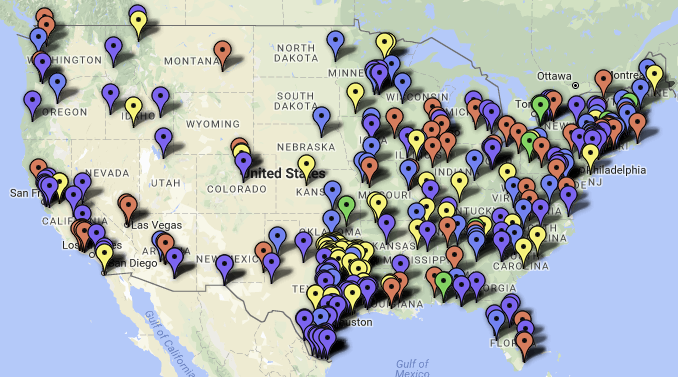Welcome to the new home of the K-12 Cyber Incident Map!
If you came from EdTech Strategies, you may have read the announcement before following the link here; if not, no matter. The new K-12 Cybersecurity Resource Center (beta) (https://k12cybersecure.com) is designed to provide information, resources, and news about cybersecurity issues affecting K-12 students, educators, and schools.
Since the Map was launched in March of 2017 as a self-funded initiative of EdTech Strategies, it has been instrumental in drawing attention to the emerging cybersecurity threats facing U.S. K-12 public schools and districts. From a concept first sketched on the back of a manila folder (courtesy of a cross-country flight) to its new home on this website, it has repeatedly demonstrated its value to a wide range of stakeholders. For instance, the Map and related resources have been:
- Cited in testimony to the U.S. Congress and State legislatures, as well as in public comments to the U.S. Department of Education, the Federal Communications Commission (FCC), and Federal Trade Commission (FTC);
If we were really thinking broadly about the future of our kids’ privacy, and not, instead, teaching industry-fed assumptions about apps and sharing, the @K12CyberMap would have thousands of followers and generate major local press.
— Gregory Michaelidis (@gregmichaelidis) May 1, 2018
-
Cited in major media, education trade outlets, and blogs (in audio, video, and print), including the Wall Street Journal, American Public Media, Boing Boing, Motherboard, Education Week, EdSurge, THE Journal, and The Hechinger Report (see the Press Room);
The best compilation of #k12 #Cybersecurity breaches has a new URL. Hats off to @douglevin for maintaining this map at https://t.co/dzydLLll60
— Elliott Levine (@edtech_elliott) May 1, 2018
-
Used by school district leaders to help advocate and plan for better cybersecurity practices, as well as by postsecondary faculty in Colleges of Education as part of their course content; and
Thank you @douglevin for your creation of the K-12 Cybersecurity Resource Center @K12CyberMap. I’ve added to a set of resources on issues related to #edpsych/#edtech at https://t.co/sU6y9RpGoF. Your work is also critical for leaders in #ECE/#earlyed/#highered to see. Many thanks!
— Roxana Marachi, PhD (@ConnectEdProf) April 27, 2018
-
Used by unaffiliated companies, organizations, and independent consultants offering cybersecurity products, training, and services to schools, including as a part of their education marketing campaigns.
As I prepare for a presentation on contemporary legal issues in education, I’m reminded that any school system that isn’t consulting @douglevin‘s work (and compensating him for his work) on cybersecurity / data privacy is making a huge mistake. https://t.co/mniH1EDlTL
— Jon Becker (@jonbecker) April 13, 2018
The need and demand for this information has been demonstrated, and I’m grateful for the conversation it is generating. Nonetheless, the K-12 Cybersecurity Resource Center is a work in progress. The new site and identity give it the foundation to grow, which it can do with your help.
How can you help?
- Sign up to receive email updates of new content on the site (a form is on the sidebar of most pages) and share those updates with colleagues. (You also can find privacy-respecting social share buttons on the sidebar, including a link to the RSS feed.)
- If you feel like you or your organization has benefited from this work, please consider becoming a supporter. Your support will help ensure that this work continues and is able to remain independent and freely available to the broadest possible audience.
- Contact me with suggestions/tips or ideas for how to enhance the reach and effectiveness of this work or to explore custom research/consulting projects.
Over time, and with your support, I anticipate making numerous technical enhancements to the Map (and presentation of the underlying incident data), enhance incident analysis and reporting, and to communicate K-12 cybersecurity information, resources, and recommendations even more robustly and over more channels.
In the mean time, pardon the dust as we work to spruce things up and settle into our new virtual home. Thanks very much for visiting, and do come again.
